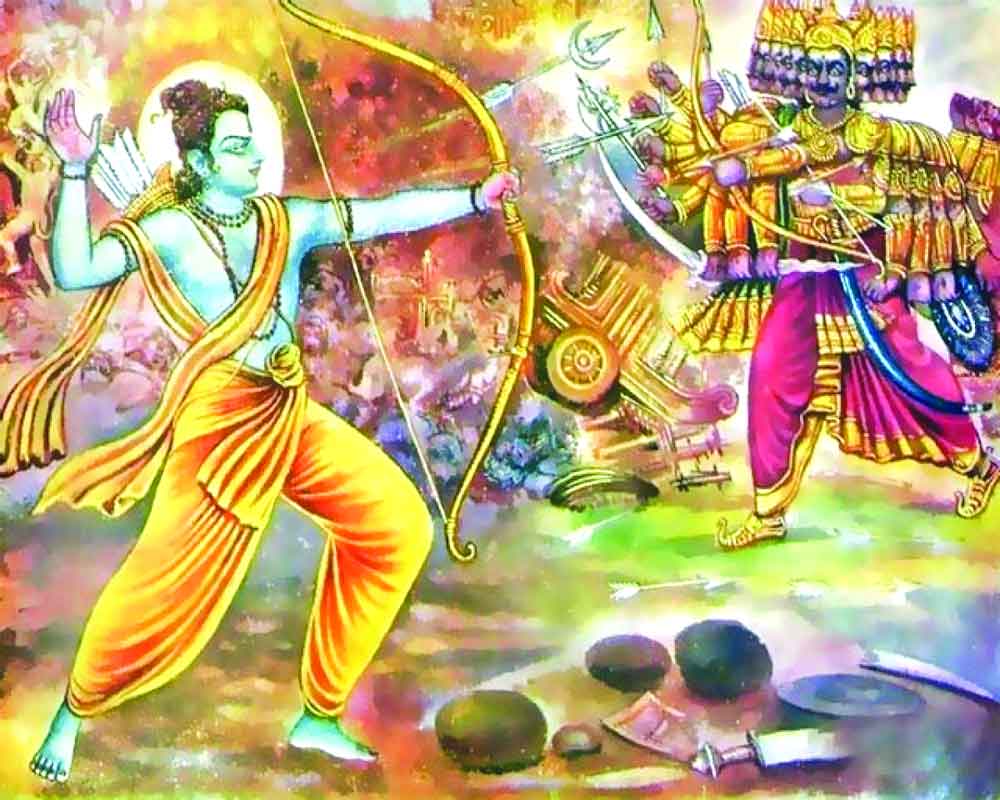Management curriculum should include the Ramayana
The Ramayana, the most widely read Indian epic, is not just a scholarly narration of the life and times of Lord Ram but also a treatise on management principles, the most modern of the applied social sciences. It has lessons on politics, strategy, economics, commerce, values and ethics, leadership and even the recent subject areas like CSR.
Ramayana deals with all aspects of management practices in a very lucid, yet comprehensive manner. But it’s quite a surprise that Indian business schools have not considered it as a text or even a reference in the course curriculum as suggested readings. This one piece of literature can offer valuable insights on different subjects that form the part of a typical business school curriculum.
While copious western literature finds place in a standard course structure of a business school programme, Ramayana that can offer vital clues to management practices to the students of business schools is found missing. Anyone who has gone through the text of Ramayana, either Ramcharitmanas by Goswami Tulsidas, or Valmiki Ramayana, would know that crucial management lessons are offered in this Indian epic through the actions of various role players like Lord Ram, his three younger brothers, his wife Sita and Hanuman.
The best part of Ramayana is that the main lead played by Lord Ram provides immensely valuable lessons on what ethical conduct is all about. Values and ethics these days are given great emphasis in the course content and form a significant portion of the curriculum in almost every business school as business organisations are emphasizing ethics and morality.
Raising the morality quotient has become a major concern today. It has become an important attribute of managerial quality gaining precedence over intelligence quotient. Lord Ram has led by example. He is an epitome of values and ethics and a role model to be emulated. He is also a picture of humility, commitment and character.
Humility, it may be recalled, is a highly thought after managerial quality. Similarly, his brothers also show what ethical conduct is all about. These are the times when everyone is hankering for power and pelf. But here is a person who, despite being the legitimate heir to the throne, is magnanimous enough to let go of the authority to rule just to keep his father’s words. The entire population of the kingdom wanted him to be the ruler. But he declined.
The beauty of the whole Ramayana is that his younger brother Bharat, who was given the throne, is equally unwilling to occupy the throne, because he thinks it was not legitimate.
Ramayana also contains some very crucial lessons on statecraft. In fact, the dialogue between Ram and Bharat in Ayodhya khand is a treatise on administrative wisdom. No aspect of administration has been left out in that discussion. The Valmiki Ramayana presents this aspect very comprehensively. Duty, sacrifice, integrity, values and righteousness is reflected in behaviour of all leading characters. Not only this, there are strategy lessons to be picked up on teamwork, project management, human resource management and warfare.
It will be an understatement to say that Ramayana is a text that contains lessons for management practitioners. In fact, Ramayana is a complete text on social sciences dealing with all dimensions. It is a handy reference material and needs to be included in the Management program.
(The author is Founder of The Goodness Movement and Kaizen Mantra)


























